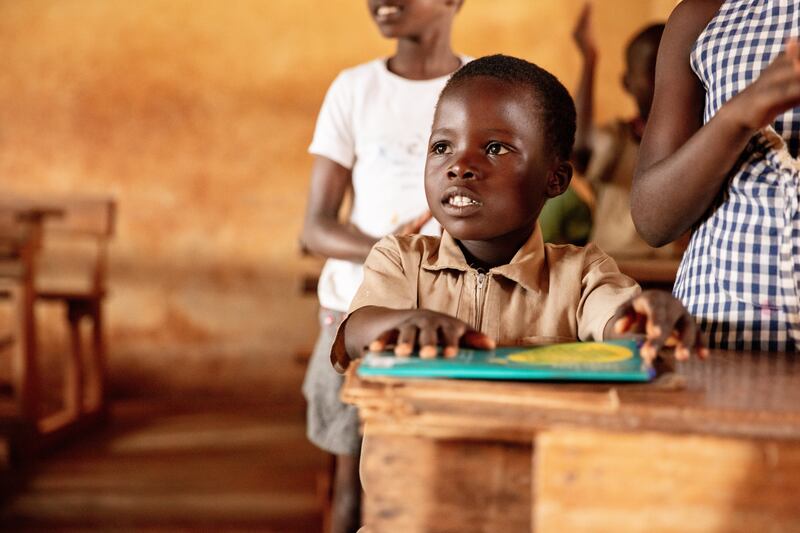When you nibble on a chocolate treat, how often do you think about where it has come from? If you go right down the supply chain, most of the world’s cocoa comes from small, privately owned cocoa farms in Ghana, Côte d’Ivoire, Cameroon and Nigeria.
West African cocoa farms are typically no larger than two to three hectares; the size of three to four soccer pitches. This can make it difficult for farmers to earn a living income. In recent times, ageing trees, crop disease and climate risks have increased the challenges they face.
Solutions to support the farmers and boost crop yields are needed. This requires investment, education and other practical support.
The Nestlé Cocoa Plan was launched in 2009. To date, it has engaged more than 150,000 cocoa-farming families, building on three pillars: better farming, aiming to improve livelihoods in communities; better lives, aiming to improve social conditions for families; and better cocoa, aiming to improve product sustainability.
The innovative Income Accelerator Programme builds on more than a decade of experience within the Nestlé Cocoa Plan and aims to improve the livelihoods of cocoa-farming families, while advancing regenerative agriculture practices. The ambition also includes transforming the global sourcing of cocoa to achieve full traceability and segregation of its cocoa products.
The importance of education

Launched in 2022, the Income Accelerator Programme offers financial incentives and support mechanisms to encourage cocoa farming families to take action in four critical areas: enrolling children aged six to 16 in school; adopting good agricultural practices – in this case, pruning; planting additional forest and fruit trees on the farm; and diversifying income sources beyond cocoa.
Households receive a cash transfer of €100 for taking action in each of these key areas. If they complete all four elements, they receive a bonus of €100, meaning they can earn up to €500 additional income per year in each of the first two years. The sum is paid regardless of farm size, meaning that farmers with the smallest plots are not disadvantaged.
The funds are paid in an innovative and efficient way as households receive payments via a mobile money cash transfer. The lead woman of the household is also registered and receives half of the cash transfers offered by the Income Accelerator Programme. She receives all the schooling incentive payments.
The timing of these transfers is important. Payments are staggered across the calendar year, which allows the farmer families to better budget for how the additional money is spent.

Pruning keeps the crop healthy
Let’s take a more detailed look at one of the main pillars of the programme: good agricultural practices. The action required to access the incentive is to prune one hectare of land. Pruning is key to keeping the trees healthy; effective pruning can dramatically increase the quality and quantity of cocoa produced versus unpruned trees. Crop disease and pests are reduced when there is better aeration around the trees.
However, it is hard, manual work for the farmer, and they may also be reluctant to undertake a harsh pruning, which can see half of the tree cut back. By establishing subsidised, professionally trained pruning groups, Nestlé is providing farmers with the support and education to adopt these effective ways of farming, helping them understand how and when to prune their cocoa plants properly.
A report from the early stages of the 10,000 farmer test-at-scale, published this year by Kit Royal Tropical Institute, suggests the cocoa yield levels of households in the accelerator programme increased by almost one-third – 32 per cent – in the 18-month period since the commencement of the programme, while school attendance rates also saw a noticeable spike among participants’ families – from 79 per cent to 89 per cent.
Overall, families in the programme saw a 38 per cent rise in their income. In general, the report said the Income Accelerator Programme had significantly enhanced cocoa productivity, increased investments, and net income, mitigated diseases and pests on cocoa farms, promoted financial access and positively influenced female empowerment and child schooling rates.
The Income Accelerator Programme continues to expand, and more than 28,000 families in Côte d’Ivoire and 2,000 in Ghana are already benefiting. The goal is to expand the programme to reach an estimated 160,000 cocoa farming households globally by 2030.
Alongside the Income Accelerator Programme, Nestlé has been working with partners including the Rainforest Alliance and Cargill to create a traceable cocoa supply chain at scale.
Early 2024 saw the first KitKat bars made with cocoa mass traceable to farmers enrolled in the Income Accelerator Programme hit the shelves, arriving in Ireland from May with new ‘Breaks for Good’ messaging on the packaging.
The cocoa from a group of income accelerator farms is segregated and kept separate all the way along the supply chain through to the European KitKat factories.
By choosing a KitKat the next time you decide to have a break, you’re choosing to support a programme that is empowering farmers to build social, and economic and environmental resilience for themselves, their families and their communities.
You can read more on the progress of Nestlé's income accelerator programme here.
Learn more about the great work that KitKat Breaks For Good is promoting within cocoa farming communities at kitkat.co.uk





